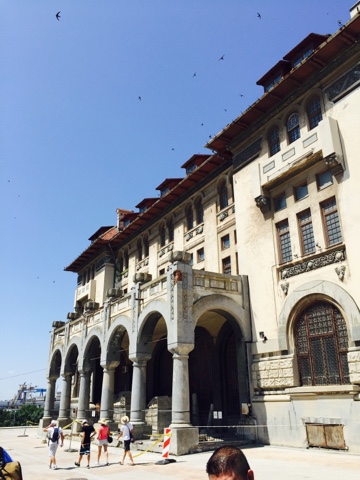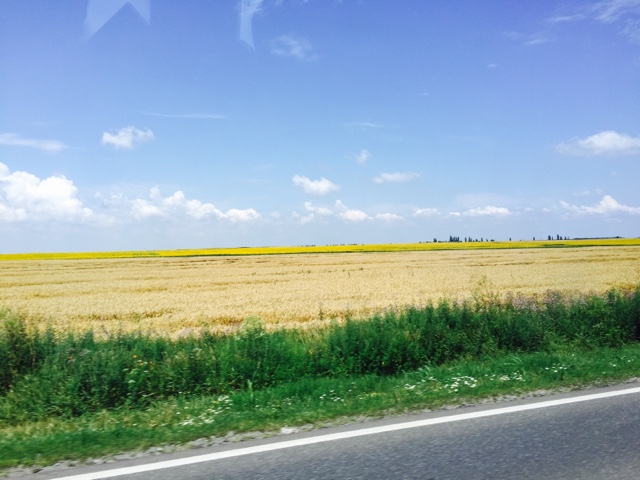Old old things
Everything in Romania is old, and what is new is made from something old. One of our professors, Dr. Carovas, said that on his first summer here in 2007, he was driving around local villages and saw pieces that had been taken from the fort and used in housing and other building projects. It's fascinating, considering the history of this country.
It's currently Monday night, 9:32PM. My past three days have been both full and lazy, depending. Friday evening was nice, with our first weekend "party" to celebrate British Adam and Phil's birthdays, both last week. We all gathered at Casa Halmyris (known as The Casa, to us) and celebrated appropriately. Then, Saturday morning, boarded a bus far too early for anyone's preference.
Our destination was the old town of Constantea, to visit the local archaeological museum and the beach. The museum, we frequented first. It was located in a large and beautiful building, in a ratherhidden plaza that could be considered the nice and touristy side of town. Constantea is a large city, too, but in a very Romanian way. The buildings aren't very tall, and apartment buildings are the most common. They're easily identified with the clothes lines stretched across balconies. It's very basic here.
The museum contained artifacts from various sites in the region, mostly smaller examples of glass or pottery. Anything extremely common to the Roman towns.
Beside this was another covered area with a beautifully preserved mosaic inside. It was originally part of the harbor, separating the city from the sea. It's one of the latest and best preserved of the age in the region
The beach, of course, was everyone's aim concern, and it was our next stop. Of course, the Atlantic Ocean wasn't my view this time. Instead, something awaited me that I've only read about in books - The Black Sea. I can't describe its beauty, as it crashed in, or how I felt finally seeing it for the first time. To be honest, I'm not certain my poor brain has completely comprehended that sensation. But it was there, and I walked it's shoreline.
After spending some time on the beach, we packed back up and headed for another archaeological site, Histria, one of the most significant forts of the Roman Empire in this region. It's been fully excavated, and is pretty enormous. We were lucky to have Dr. Carovas there to tour is around the place, giving us insight into what we were looking at. Truly amazing to think of the people who walked there and the lives that were led, only to be completely lost to time. It certainly puts into perspective ones place in this world.
Sadly, my phone was dead so I don't have any pictures but others do so hopefully they'll surface eventually.
Yesterday, Sunday, was quite lazy and lovely, but today was back to the digging, the shoveling, the dirt carrying. It was wonderful weather, though, so it went by quite quickly.
Tonight, the professor gave us a nice lecture on the two Saints that were martyred at Halmyris in 290 C.E. It was certainly interesting, but I'll just give a super brief description. Epictet and Astyon were two Christian missionaries, that came to Halmyris and were found guilty of sorcery after word got around that Epictet was performing exorcisms. Instead of proclaiming their innocence, the men refused to talk and were thereby sentenced to torture and execution by decapitation. Then, they were made saints by the Orthodox Church and every year on their Martyrdom, July 8, there's a pilgrimage to the half built monastery in their honor, close to the site.
I was lucky enough to go there last week.
Although I didn't understand the Romanian or the customs and rituals, the chanting and singing was beautiful and certainly something to see and hear.
The Saints bodies were found in 2001 and now they make the pilgrimage as well, so up on that stage the two men lay. Pretty cool, huh?
Another week of digging, so just keep checking back. I'll have something new to say soon. For now, good night!








Comments
Post a Comment